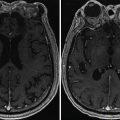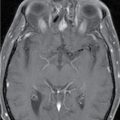2.1 Basic radiobiology
The predominant method of damage in fractionated photon-based radiation therapy is damage to the DNA. The damage is primarily caused by reactive oxygen species (free radicals) generated by the interaction of photons with water. The reactive oxygen species then interact with the DNA to cause single-strand or double-strand DNA breaks. Single-strand breaks are usually repaired by the innate DNA repair processes of cells and are not lethal. Double-strand breaks are the lethal damage.
In addition to this classic model on the effects of radiation on cell survival, there are also cell-based responses that contribute to cell death. For example, the induction of DNA damage also activates innate cell processes, such as apoptosis, and induces damage to the cell membrane and internal organelles, which can induce cell death and alter immunogenicity. The radiation also damages cells in other tissues, such as blood vessels’ walls of the tumor, leading to cell death. These non-direct effects may have increased importance in single-fraction and hypofractionated radiation therapy. Vascular damage also plays an important part in late tissue damage of normal tissues, which can lead to complications.
Classic, fractionated radiobiology has five controlling factors, the 5 Rs, that regulate the sensitivity of cancers to radiation therapy :
- ▪
Repair – the ability of cells to repair radiation damage
- ▪
Repopulation – the growth of cells between treatments
- ▪
Redistribution – radiation kills cells in more sensitive phases of the cell cycle and between treatments; cells will redistribute between sensitive and insensitive phases
- ▪
Reoxygenation – hypoxic cells are less sensitive to radiation therapy
- ▪
Radiosensitivity – some cells are more innately sensitive to damage than others
For radiosurgery, especially single-session radiosurgery, only repair and radiosensitivity have significant effects.
2.2 Linear quadratic model
In standard radiobiology, the two most common methods of calculating the equivalent effectiveness of treatment with different doses per fraction are the Biologically Effective Dose (BED) and its derivative, the Equivalent Dose in 2 Gy fractions (EQD2). Both are based on the linear-quadratic model of cell death in response to the dose of radiation therapy:
where, for a single fraction:
SF – survival fraction after treatment with radiation therapy
α – lethal lesions due to single-strand breaks (single hit)
D – delivered dose
β – lethal lesions due to double-strand breaks (double hit)
This can be expanded to include correction for the time over which the treatment is given with the Lea-Catcheside time factor (G), which is introduced into the quadratic variable (GβD 2 ).
It is controversial as to whether the linear-quadratic formula is sufficient for high-dose, small-number treatments (such as in radiosurgery) because the equation does not include cell death due to effects on the tissue stroma, such as vascular damage, or tissue effects such as hypoxia. Clinically, however, the formula with the G correction appears to be sufficient to use with doses of up to 10 Gy to 18 Gy per fraction.
The dose needed to kill a certain number of cells—the BED—is then calculated:
Stay updated, free articles. Join our Telegram channel

Full access? Get Clinical Tree







